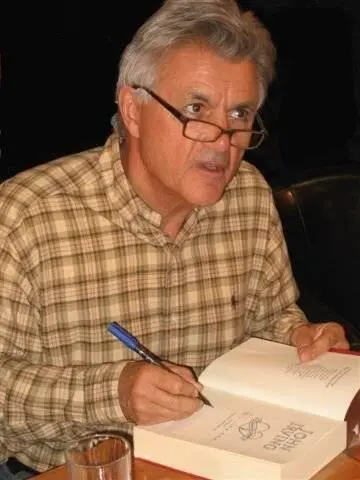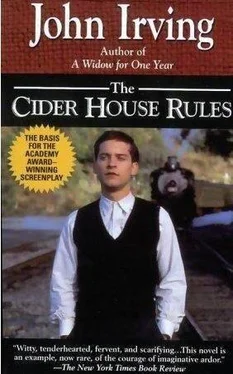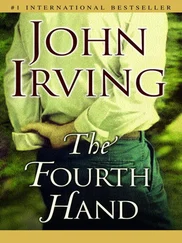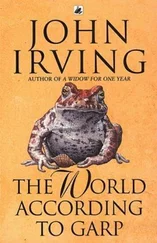(p 207) Anyone who grew up near the ocean, as I did, could detect a sea breeze in Iowa (if one was blowing).
(p 278) The prayer that Mrs. Grogan recites is credited to John Henry (Cardinal) Newman, the English theologian and author (1801-90); I'm told that the prayer was originally part of one of Cardinal Newman's sermons. It was also what served my family as a family prayer and was spoken at the graveside of my maternal grandmother 727 -it was her favorite. Her name was Helen Bates Winslow, and she died just a month short of her hundredth birthday; the festivities the family had planned for that event would doubtlessly have killed my grandmother, had she lived until then. Cardinal Newman's prayer must be a very good one, or at least it worked very well-and for a very long time-for my grandmother, who was devoted to it. I was devoted to her.
(pp 298-9) Alzheimer described the disease he called presenile dementia in 1907. 'Deterioration in cognition' occurs relatively early in the disease and is marked by a disturbance of recent memory and a loss of the ability to learn new things. Dr. Nuland of Yale also states that some patients are more likely to begin with personality changes and some with intellectual changes. The advance of the disease, in either case, is marked by a lowering threshold of frustration. Dr. Nuland notes that the sequence in which certain small jobs need to be done would be difficult to follow and that complex ideas are hard to comprehend and impossible to explain to others. It is a rapid deterioration that advances in Alzheimer victims: the average life-span, from the time of diagnosis, is approximately seven years; there are patients who live much longer, and many who die within a few months. In recent years, it has been recognized that Alzheimer's is not only an uncommon disease that affects people in midlife, but also a relatively frequent cause of mental and physical degeneration in the elderly- many of whom were previously thought to have simple hardening of the arteries (arteriosclerosis).
(p 360) The famous Paris edition of 1957 (which was privately printed) collected seventeen hundred examples of the limerick. This limerick, which is categorized as an 'organ limerick,' originated in print in 1939; it may have been in spoken circulation earlier. In 194-, when Senior and Wally are saying it to each other, it would have been only a few years old.
(p 381) Benjamin Arthur Bensley's Practical Anatomy of the Rabbit {728} is a real book, published by the University of Toronto Press in 1918. Bensley is a clear, no-nonsense writer; his book, which he calls 'an elementary laboratory textbook in mammalian anatomy,' employs the anatomy of the rabbit as an introduction to an understanding of human anatomy. Bensley's is not Gray's, but Practical Anatomy of the Rabbit is a good book of its kind. As a very 'elementary' student of anatomy, I learned a lot from Bensley-his book made reading Gray's much easier for me.
(p 394) The Mclntosh apple was developed in Ontario, where the climate is similar to New England and New York's Hudson and Champlain valleys (where the apple has flourished).
(pp 416-7) In Practical Anatomy of the Rabbit, Bensley describes the ovary and oviducts of the rabbit and compares his findings to the same equipment in other animals.
(p 452) The Exeter limerick is dated 1927-41; the town of Exeter appears in many limericks because it rhymes with 'sex at her'-as in, 'It was then that Jones pointed his sex at her!' (A famous last line.) I always heard a lot of Exeter limericks because I was born and grew up in Exeter, New Hampshire.
The Brent limerick is dated 1941. It is a classic 'organ limerick,' so called because there is a special category of limericks devoted to the peculiarities of the male and female organs. As in,
There was a young fellow named Cribbs
Whose cock was so big it had ribs.
(1944-51)
And in the famous 1938 limerick that was voted Best Limerick by one of the graduating classes of Princeton:
There once was a Queen of Bulgaria
Whose bush had grown hairier and hairier,
Till a Prince from Peru,
Who came up for a screw
Had to hunt for her cunt with a terrier.
{729}
The Toronto limerick is circa 1941.
(p 476) The Bombay limerick is dated 1879-an old one.
(pp 494-5) Dr. Larch would have been surprised to learn that his condemning statistics of unwanted children were still accurate in 1965. Dr. Charles F. Westoff of Princeton's Office of Population Research, and the co-director of the 1965 National Fertility Study, concluded that 750,000 to a million children-born to married couples between 1960 and 1965-were unwanted. This estimate is low. Even in a poll, many parents are unwilling to admit that any child of theirs was unwanted. Furthermore, unwed or abandoned mothers were not included in the survey; their opinions regarding how many of their children were unwanted were never counted. For more information on this subject, see Jarnes Trager's The Bellybook (1972).
Ben Franklin was the fifteenth of seventeen children; his faith in rapid population growth was declared in his Observations Concerning the Increase of Mankind (1755).
(pp 517-8) My source for this delivery is Chapter XV, 'Conduct of Normal Labor,' Williams Obstetrics, Henricus J. Stander-circa 1936. I base the described procedure on such a dated source-it is performed in my story in 1943-because I wish to emphasise that Homer's procedure, which has been learned from Dr. Larch, is somewhat old-fashioned but nonetheless correct.
(p 528) 'I was born with a caul, which was advertised for sale, in the newspapers, at the low price of fifteen guineas.' From David Copperfield, Chapter 1 ('I Am Born'). The caul is the membrane that is usually ruptured and expelled at the onset of bearing-down pains but that in rare cases does not rupture-the child coming into the world surrounded by membrane. In the time of Dickens, this protective shroud was taken as a sign that the child would be lucky in life-and, more specifically, never be drowned. In the story of David Copperfield, this is an early indication that our hero will find his way and {730} not meet with the form of poor Steerforth's undoing (Steerforth drowns).
Homer Wells, very familiar with David Copperfield, is interpreting the drop of sweat that prematurely baptizes his birthing child as having similar protective powers. Homer's child will be lucky in life; Angel will not drown.
(p 542) The first edition of Greenhill's Office Gynecology was published in 1939; the eighth edition of Diseases of Women (Roquist, Clayton and Lewis) was published in 1949.
The medical journals that Larch would always have had on hand-in addition to The New England Journal of Medicine -are The Journal of the American Medical Association (in doctors' shorthand this is always called JAMA ), The American Journal of Obstetrics and Gynecology (it has the most vivid illustrations), The Lancet (a British journal), and Surgery, Gynecology and Obstetrics (in doctors' shorthand this is always called S, G and O; in 194-, lots of surgeons did gynecology, too).

John Irving was born in Exeter, New Hampshire, in 1942, and he once admitted that he was a 'grim' child. Although he excelled in English at school and knew by the time he graduated that he wanted to write novels, it was not until he met a young Southern novelist named John Yount, at the University of New Hampshire, that he received encouragement. 'It was so simple,' he remembers. 'Yount was the first person to point out that anything I did except writing was going to be vaguely unsatisfying.'
Читать дальше













